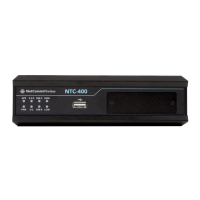7.2.4.5 Syslogd
The Syslogd section allows the network administrator to select the type of event to log and to be sent to the designated
Syslog server.
The following settings are available:
Figure 339 – Syslogd settings
Item Notes Description
Enable Disabled by default. Check the Enable box to activate the Syslogd function,
and send event logs to a syslog server
Server N/A Select one syslog server from the Server dropdown list to
send the event log to.
If none has been available, click the Add Object button to
create a system log server.
You may also add a system log server from the Object
Definition > External Server > External Server tab.
Log type
category
Disabled by default. Select the type(s) of events to be logged and be sent to
the destination syslog server.
Available events are System, Attacks, Drop, Login message
and Debug
Table 211 – Syslogd settings
7.2.4.6 Log to Storage
The Log to Storage section allows network administrators to select the type(s) of events to log and be stored at an internal or
an external storage device or location.
Figure 340 – Log to Storage
Item Notes Description
Enable Disabled by default Check to enable sending log to storage.
Select Device Internal is the default
setting.
Select Internal or External storage.
Log file name Disabled by default Enter a log file name to save logs in designated
storage as.
Split file Enable Disabled by default Check Enable to split the log file output whenever
the file reaches the specified size limit.

